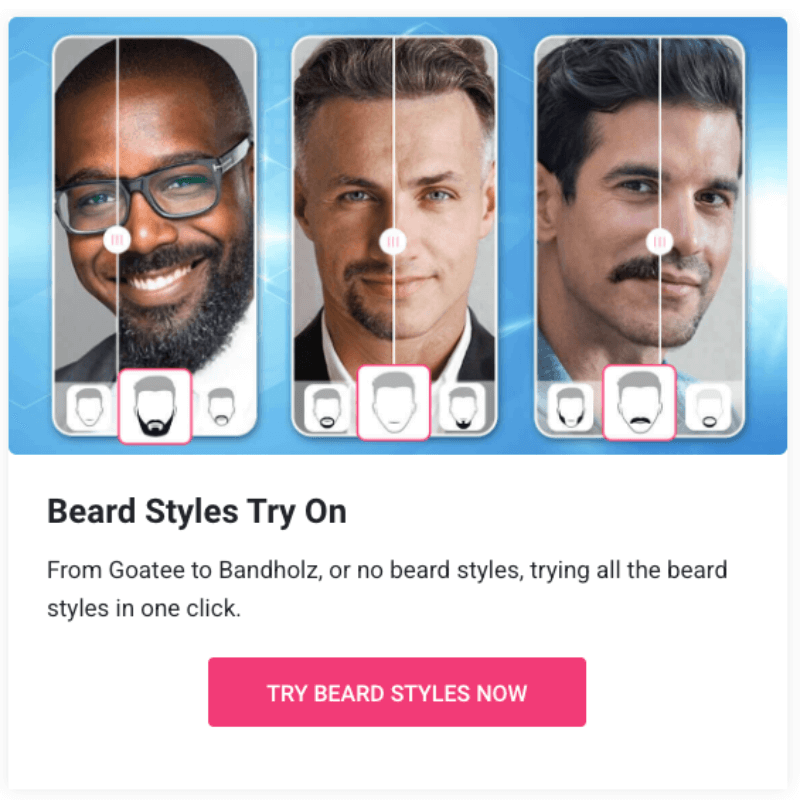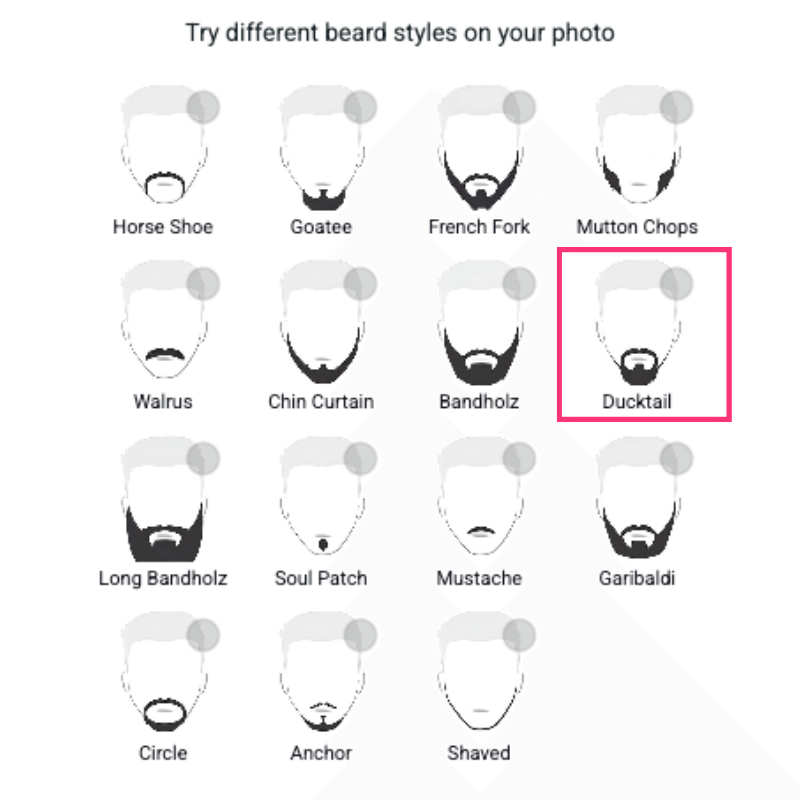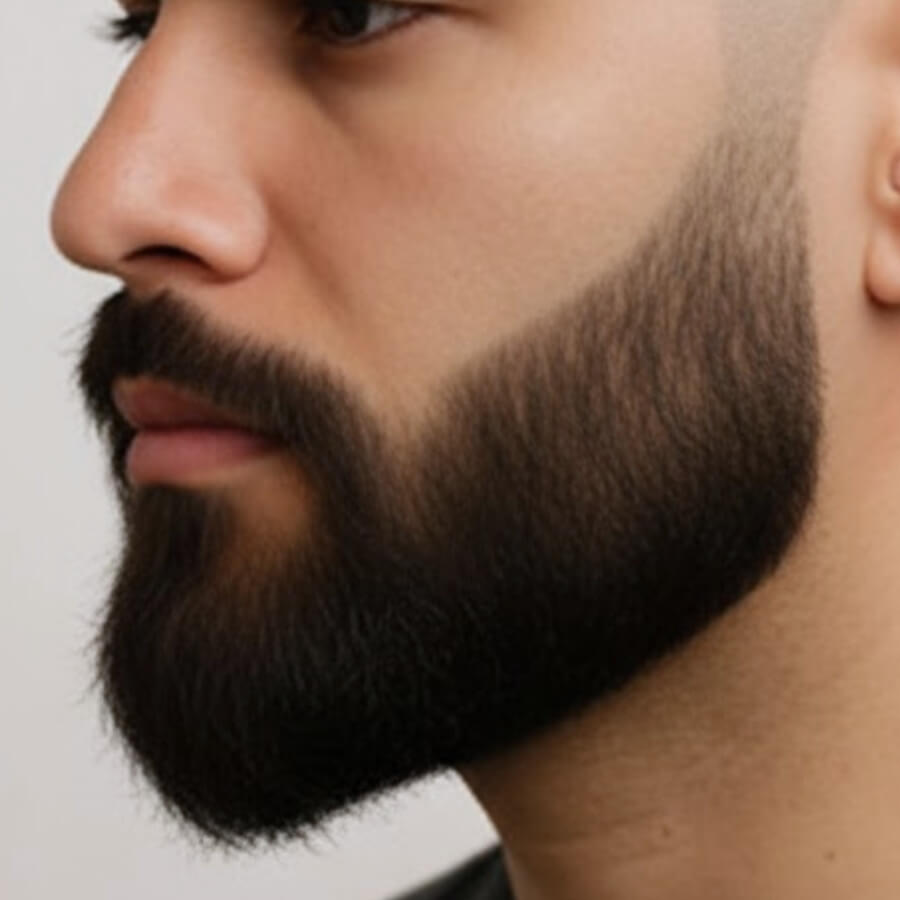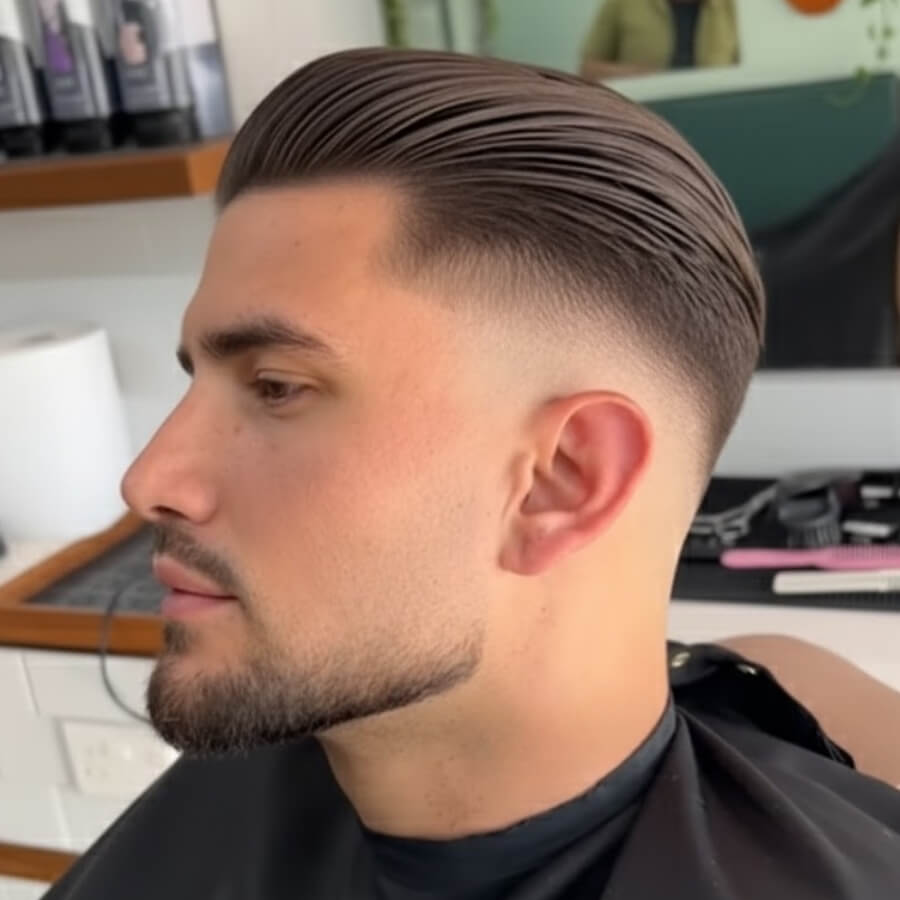
Faded Beard | Try On Instantly
What is Faded Beard & Why This Style Is Rising Fast?
A faded beard blends longer facial hair into shorter lengths with a smooth gradient. The result is clean, structured, and modern. This style has surged in popularity as more men search for ways to sharpen their jawline and enhance their facial symmetry.
How to Try On Faded Beard Styles?


Choose “Ducktail” Style
Click the style on the right. You can also select multiple styles to try out.

See the Results
Get your result with just a click!
Key Features of a Faded Beard
A faded beard is defined by its seamless blending—from dense beard growth to shorter lengths near the cheeks, sideburns, and neckline. The fade creates a balanced, polished look suitable for many face shapes.
Low / Mid / High Fade Differences
Low / Mid / High Fade Differences
- A low fade starts near the jawline and keeps the cheeks fuller.
- A mid fade creates a cleaner, stronger contour near the mid-cheek.
- A high fade removes bulk higher on the face for a sharp, bold result.
Beard Length Variations: Short, Long & Hair-Connected Fades
Beard Length Variations: Short, Long & Hair-Connected Fades
Short beards work well with subtle fades for a neat, everyday style.
Long beards benefit from gradual transitions that maintain volume but avoid heaviness.
A connected hair-to-beard fade blends the haircut into the beard for a unified look.
How a Faded Beard Shapes Facial Proportions
A well-executed faded beard enhances the face by controlling volume, angles, and visual balance.

Sharper Jawline Definition
The fade focuses attention on the lower face, creating a clean, sculpted jawline that appears more defined.

Slimmer Face Width
Removing bulk along the cheeks reduces horizontal width, making the face appear slimmer and more refined.

More Dimensional & Structured Look
The gradient adds depth and dimension, improving the overall contour of the face.
Popular Types of Faded Beards

Low Fade Beard
A subtle gradient near the jawline that maintains fuller cheek volume. Ideal for softer, natural looks.

Mid Fade Beard
Balanced and modern. Creates noticeable structure without looking too sharp.

High Fade Beard
Bold and edgy. Removes weight near the upper cheeks for a clean, high-contrast style.
How Brands Can Use AI to Offer Better Beard Styling Experiences
AI enhances grooming experiences for both consumers and businesses by offering personalized, visualized results.

AI analyzes facial structure to recommend the most suitable beard styles and fade heights.

Consumers can preview beard styles instantly on their own face—reducing doubt and boosting purchase confidence.
Faded Beard FAQ
What is a Faded Beard?

A faded beard blends different beard lengths to create a soft, smooth transition from long to short.
Which Face Shapes Suit a Faded Beard?

Round, square, long, and heart-shaped faces all work well with a faded beard. The fade height can be adjusted for each.
How Long Should My Beard Be Before Getting a Fade?

Usually 1–2 weeks of growth is enough to create a clean fade.
How Long Should My Beard Be Before Getting a Fade?

Usually 1–2 weeks of growth is enough to create a clean fade.
Can I Create a Faded Beard at Home?

Yes, but achieving a smooth gradient requires practice. Many people prefer a barber for precise results.
Do I Need a Professional Barber for a Faded Beard?

Not always, but a skilled barber can create a more even, consistent fade—especially for first-timers.






